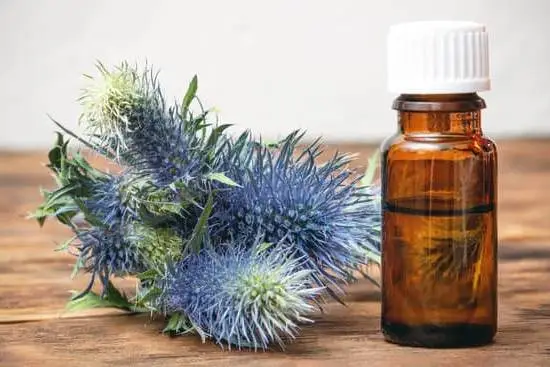Aromatherapy has gained significant popularity in recent years as a natural way to promote relaxation and improve overall well-being. While many people find aromatherapy to be beneficial for themselves, pet owners may wonder: does aromatherapy hurt pets? In this article, we will delve into the world of aromatherapy for pets, exploring the science behind it, potential risks, and safe practices.
Aromatherapy for pets involves the use of essential oils to create a pleasant and calming environment for our furry friends. These oils are typically diffused into the air or applied topically to provide therapeutic benefits. However, it is important to understand that not all essential oils are safe for animals, and some can even be toxic to them.
When using aromatherapy around pets, it is crucial to be informed about which essential oils are safe and which ones can potentially harm them. Understanding the science behind aromatherapy and its effects on animals will help pet owners make educated decisions when incorporating these oils into their homes. In the following sections, we will explore common essential oils used in aromatherapy, signs of toxicity in pets, pet-friendly alternatives, and tips for safely using aromatherapy around our beloved companions.
Understanding the Science Behind Aromatherapy and Its Effects on Animals
Aromatherapy has become a popular alternative treatment for various health issues in both humans and animals. It involves the use of essential oils derived from plants to promote physical and psychological well-being. But how does aromatherapy affect our furry friends?
Essential oils are highly concentrated and potent liquids that can be harmful to pets if not used properly. When inhaled, these oils can have a direct impact on an animal’s respiratory system, skin, and gastrointestinal tract. Cats, in particular, lack certain liver enzymes that help metabolize these compounds, making them more susceptible to toxicity.
Some common essential oils that may be harmful to pets include tea tree oil, citrus oils (such as lemon and orange), pine oil, eucalyptus oil, peppermint oil, cinnamon bark oil, pennyroyal oil, and sweet birch oil. These oils can cause adverse reactions such as vomiting, diarrhea, drooling, difficulty breathing, tremors, liver damage, or even neurological problems in pets.
To ensure the safety of pets when using aromatherapy at home or around them, it is crucial to only use pet-friendly essential oils and follow safe practices. This includes properly diluting the oils with a carrier substance like water or unscented coconut oil before diffusing them into the air. Additionally, it is important to observe pets for any signs of distress or discomfort after exposure to essential oils.
| Common Essential Oils Harmful to Pets | Potential Impact on Pets |
|---|---|
| Tea Tree Oil | Adverse reactions such as vomiting, diarrhea, drooling |
| Citrus Oils (lemon & orange) | Liver damage in cats; gastrointestinal upset |
Common Aromatherapy Essential Oils and Their Potential Impact on Pets
Aromatherapy has become increasingly popular for humans, but pet owners should be cautious when using essential oils around their furry friends. While aromatherapy can have positive effects on pets, it is important to understand which essential oils are safe and which ones can be harmful to animals.
Some common essential oils used in aromatherapy include lavender, peppermint, tea tree, and eucalyptus. However, not all of these oils are safe for pets. For example, while lavender is generally safe for use around dogs and can even have calming effects, it can be toxic to cats if ingested. Peppermint oil can also be harmful to pets if ingested in large amounts, especially for dogs.
One potential impact of essential oils on pets is toxicity, which can manifest as symptoms such as vomiting, diarrhea, lethargy, drooling, difficulty breathing, and even liver failure or death in severe cases. It is crucial for pet owners to be aware of the signs of aromatherapy toxicity in their pets and seek veterinary care immediately if they suspect their pet has been exposed to harmful essential oils.
| Essential Oil | Potential Impact on Pets |
|---|---|
| Lavender | Calming effects for dogs; toxic to cats if ingested |
| Peppermint | Harmful if ingested in large amounts; especially for dogs |
| Tea Tree | Toxic to both dogs and cats if ingested or applied topically in high concentrations |
Signs and Symptoms of Aromatherapy Toxicity in Pets
Aromatherapy has gained popularity as a natural way to promote relaxation and well-being in both humans and animals. However, it is important for pet owners to be aware of the potential risks that aromatherapy can pose to their furry friends. While many essential oils can have beneficial effects on pets, some oils can be toxic and harmful when inhaled or ingested by animals.
Common Signs of Aromatherapy Toxicity
When pets are exposed to toxic essential oils, they may exhibit a range of symptoms that indicate poisoning. These symptoms can include vomiting, diarrhea, drooling, difficulty breathing, lethargy, tremors, and seizures. In severe cases of aromatherapy toxicity, pets may experience organ damage or failure. It is crucial for pet owners to be vigilant and recognize these signs if their pets are showing any unusual behavior after exposure to essential oils.
Effects of Specific Essential Oils on Pets
Certain essential oils are known to be particularly toxic to pets. For example, tea tree oil can cause severe reactions in cats and dogs, including depression and respiratory issues. Additionally, citrus oils such as lemon and orange can lead to gastrointestinal upset in pets. It is important for pet owners to research the specific effects of essential oils commonly used in aromatherapy to ensure the safety of their animals.
Immediate Veterinary Care
If a pet exhibits any signs of intoxication from aromatherapy or other essential oil products, it is crucial to seek immediate veterinary care. Prompt treatment can help minimize the potential harm caused by exposure to toxic substances. Pet owners should bring the product packaging or container with them when seeking veterinary assistance so that healthcare providers can quickly identify the specific oil involved.
Pet-Friendly Essential Oils and Safe Aromatherapy Practices
When it comes to using aromatherapy around pets, it’s important to choose essential oils that are safe for them. Some essential oils can be harmful or even toxic to animals, so it’s crucial to do your research before using any products around your furry friends. Some pet-friendly essential oils include lavender, chamomile, and frankincense. These oils are generally safe for pets and can even provide benefits such as calming effects and stress relief.
In addition to choosing pet-friendly essential oils, it’s important to practice safe aromatherapy techniques around pets. One key consideration is the method of application: some experts recommend diffusing essential oils rather than applying them directly to pets’ fur or skin. This helps to minimize the risk of accidental ingestion or skin irritation in pets.
Another safe practice when using aromatherapy around pets is to always provide them with an option to leave the area if they are uncomfortable. Some animals may be more sensitive to certain smells, so it’s important to observe their behavior and body language when using aromatherapy in their environment.
If you notice any signs of distress or discomfort, such as excessive panting or trying to escape the area, it’s best to stop using the essential oil and remove the pet from the space where it is being diffused.
Overall, while aromatherapy can offer a variety of benefits for both humans and animals, it’s crucial to prioritize the safety and well-being of our furry companions when using essential oils around them. By choosing pet-friendly essential oils and practicing safe application techniques, pet owners can enjoy the benefits of aromatherapy without putting their beloved animals at risk of harm.
Case Studies
Aromatherapy is a popular practice among pet owners, but it’s important to understand the potential impact that essential oils can have on pets. While some essential oils can have positive effects on animals, others can be toxic and harmful. In this section, we will explore real-life examples of how aromatherapy has affected pets, both positively and negatively.
Positive Effects of Aromatherapy on Pets
There are numerous stories of pet owners using aromatherapy to help calm anxious pets or provide relief for minor ailments. For example, lavender essential oil is often used to promote relaxation in both humans and animals.
Pet owners have reported that diffusing lavender oil in their homes has helped to reduce stress and anxiety in their pets. In some cases, certain essential oils have been used topically to soothe skin irritations or as part of a holistic approach to managing a pet’s overall well-being.
Negative Effects of Aromatherapy on Pets
On the other hand, there have been instances where pets have experienced adverse reactions to certain essential oils. One common example is tea tree oil, which is known to be toxic to cats and dogs if ingested or applied directly to the skin in high concentrations.
There have been reports of pets developing symptoms such as vomiting, lethargy, and even neurological issues after being exposed to certain essential oils. These real-life examples serve as a reminder of the potential dangers that aromatherapy can pose to pets if not used carefully.
Preventing Harmful Effects of Aromatherapy on Pets
To ensure that aromatherapy does not hurt pets, it’s crucial for pet owners to educate themselves about the safe use of essential oils around animals. Understanding proper dilution ratios, avoiding certain oils altogether, and being mindful of a pet’s individual sensitivities are all important factors when using aromatherapy with pets. Additionally, closely monitoring any changes in a pet’s behavior or health after introducing aromatherapy is essential in preventing any potential harm.
By learning from these real-life examples and taking precautions when using aromatherapy around pets, pet owners can safely incorporate this practice into their pet care routines. It’s also important for pet owners to seek guidance from their veterinarian before using any essential oils around their pets, especially if they have pre-existing health conditions or are taking medications that could interact with aromatherapy products.
Tips for Safely Using Aromatherapy Around Pets
When using aromatherapy around pets, it is important to take certain precautions to ensure the safety and well-being of your furry friend. One of the most important tips for safely using aromatherapy around pets is to always dilute essential oils before use.
Undiluted essential oils can be too potent for animals and may cause adverse reactions such as skin irritation, respiratory issues, or even toxicity. It is also essential to keep diffusers and essential oil bottles out of reach of pets to prevent accidental ingestion or spillage.
Another tip for safely using aromatherapy around pets is to observe their behavior and physical responses when introducing new scents. Some animals may be more sensitive to certain essential oils than others, so it is crucial to monitor your pet’s reaction when using a new oil. If you notice any signs of discomfort or distress, such as excessive drooling, sneezing, or lethargy, it is best to discontinue use immediately and consult with a veterinarian.
It is also advisable to create a designated area in your home for aromatherapy where pets are not allowed. This can help minimize the risk of exposure and allow your pet to seek refuge in a safe environment if they are sensitive to certain scents. Additionally, choosing pet-friendly essential oils and following proper guidelines for diffusing aromatherapy can help ensure a safe and enjoyable experience for both you and your beloved pet.
Consulting a Veterinarian for Aromatherapy Advice for Pets
In conclusion, while aromatherapy can have potential benefits for pets, it is important to understand the science behind it and the potential impact on animals. Certain essential oils commonly used in aromatherapy can be toxic to pets if not used properly, leading to signs and symptoms of toxicity that pet owners should be aware of. However, there are also pet-friendly essential oils and safe practices that can be followed to ensure the well-being of our furry friends.
Some common signs of aromatherapy toxicity in pets include vomiting, diarrhea, drooling, difficulty breathing, lethargy, and even seizures. It is crucial for pet owners to be aware of these symptoms and seek immediate veterinary care if they suspect their pet has been exposed to potentially harmful essential oils.
It is always best to consult a veterinarian for advice on using aromatherapy around pets. They can provide guidance on which essential oils are safe for pets and how to use them properly. By following their advice and being mindful of the potential risks, pet owners can ensure that aromatherapy does not hurt their beloved animals.
Frequently Asked Questions
Is Aromatherapy Harmful to Pets?
Aromatherapy can be harmful to pets if certain essential oils are used in their presence. Some oils may cause respiratory issues, skin irritation, or other health problems for dogs, cats, and other animals.
What Essential Oils Are Safe for Pets to Smell?
Not all essential oils are safe for pets to smell, but some that are generally considered safe include lavender, chamomile, and frankincense. These oils may have calming effects on animals and can be diffused in moderation.
Which Essential Oils Are Not Pet Friendly?
There are several essential oils that are not pet-friendly and should be avoided around animals. These include tea tree oil, eucalyptus, citrus oils, peppermint, and others that can be toxic to pets if ingested or inhaled. It’s important for pet owners to research and use caution when using aromatherapy around their animals.

Are you looking for a natural way to improve your health and wellbeing?
If so, aromatherapy may be the answer for you.





